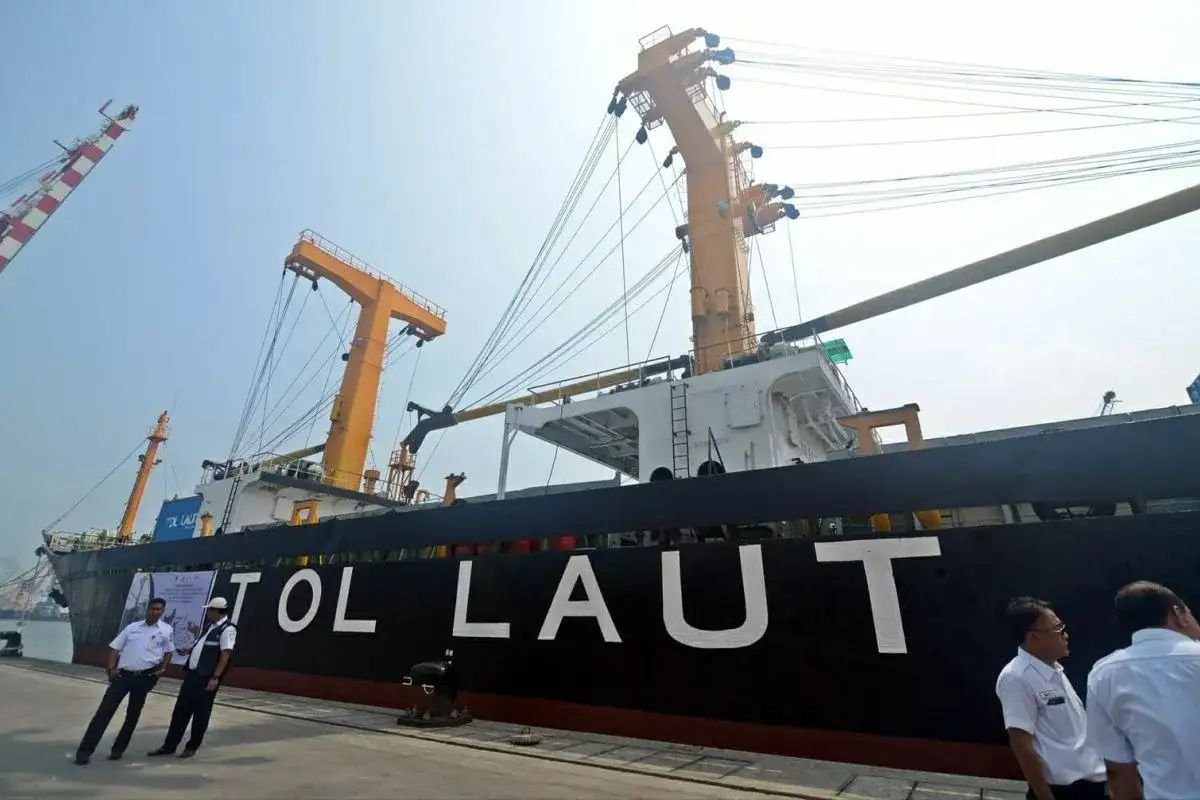The Sea Toll Program initiated by President Joko Widodo in 2015 aims to strengthen connectivity between Indonesian regions by utilizing sea routes for the distribution of goods.
At the beginning of its implementation, many doubted its effectiveness, but after explaining that what was meant was the regular and scheduled transportation of goods between ports, this concept was accepted by the public.
The Sea Toll is part of the National Strategic Program which is in line with President Jokowi’s Nawacita, namely Indonesia’s development from the periphery. This program is expected to reduce logistics costs and reduce inequality in the price of goods, especially in the Disadvantaged, Frontier, Outermost, and Border areas (3T Areas).
According to Antaranews, since its inception, this program has experienced significant development.
In 2015, there were only 3 routes and 3 ships, but in 2024 the number of routes increases to 39 with 39 ships and 114 ports served. The cargo transported has also jumped dramatically, from 30 tons in 2015 to almost 990 tons in 2024.
Despite facing several challenges, such as ships returning empty when heading west, this program still provides great benefits.
One of the main benefits is a reduction in the price of goods by up to 20-30%, accelerating the distribution of basic materials, and improving connectivity between regions.
The program also contributes to the reduction of unemployment as well as the improvement of infrastructure and the tourism sector.
In the administration of President Prabowo Subianto, who was just inaugurated in October 2024, the Ministry of Transportation proposed that the Sea Toll program be continued.
According to the Ministry of Transportation, this program is very important to reduce price disparities, especially in the 3TP region.
For this reason, the ministry has proposed a budget of IDR 1.124 trillion to support the sustainability of this program in 2025. The community, especially in the 3T area, hopes that this program can continue to run with several improvements, such as timeliness and ship availability.
According to Liputan6.com, Minister of Transportation Budi Karya Sumadi estimates that the Nusantara Capital City (IKN) will soon become the main center of the sea toll, especially for logistics distribution to the Eastern Indonesia region.
The Minister of Transportation considers the success of Kupang as a sea toll node point to provide a positive example, where logistics distribution to 3TP areas can be carried out more efficiently through the capital city of East Nusa Tenggara (NTT).
Budi Karya Sumadi also added that private shipping business actors have begun to realize the great potential that exists around the archipelago’s capital.
Some of them have even developed ports in the region. The government is also trying to support this development by endorsing several ports to become new nodes of the sea toll.
According to him, this will significantly reduce logistics travel time. For example, with a closer port, the distance that used to take up to seven days to travel can be shortened to five days.
This means that the delivery of goods can be done three times a month, compared to the previous one that could only be done once a week or even ten days, because of the long distance, between 2,000-3,000 km.
Sources: Antaranews, Liputan6.com
Image: AntaraNews

